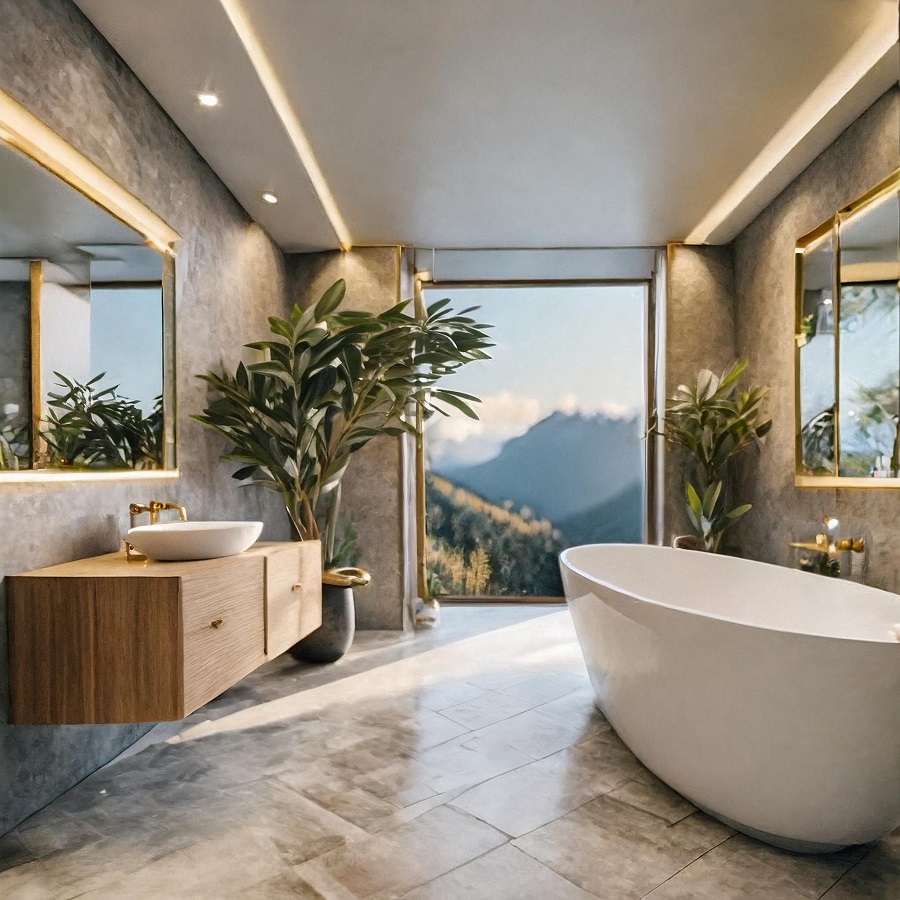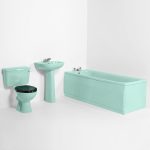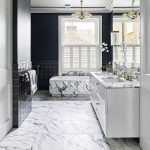The Versatility of Beige in Bathroom Design
When it comes to creating serene and timeless bathroom spaces, beige stands out as a versatile color choice. Far from being merely ‘safe’ or ‘boring’, beige can transform a bathroom into a chic sanctuary, offering flexibility in design that withstands the fickle nature of trends. Beige bathroom ideas are becoming increasingly attractive for their ability to evoke calmness and classic appeal while staying on-trend.
Designer insights suggest beige’s adaptability is key; its spectrum ranges from darker, earthy tones to pale, creamy variations. This chameleon quality means beige can take on a range of aesthetics, from modern minimalism to warm traditionalism. Creative use of beige can also tie in textures and materials, lending depth and complexity to a space typically dominated by hard surfaces like tile and porcelain.
Crafting the perfect beige bathroom is about balance and contrast. Pairing beige with whites infuses freshness, while darker beige shades add a dramatic touch. Warm beige tones create a cozy ambiance, and when accompanied by natural materials like wood, the result is a harmonious blend of comfort and style. Incorporating different finishes and textures, such as stone, terrazzo, or metal fixtures further plays up beige’s versatility, transforming the bathroom into a visually interesting and inviting space.
As we dive into the subtleties of beige, remember that this hue is more than just a color—it’s a design tool that can elevate your bathroom to new heights of elegance and tranquility.
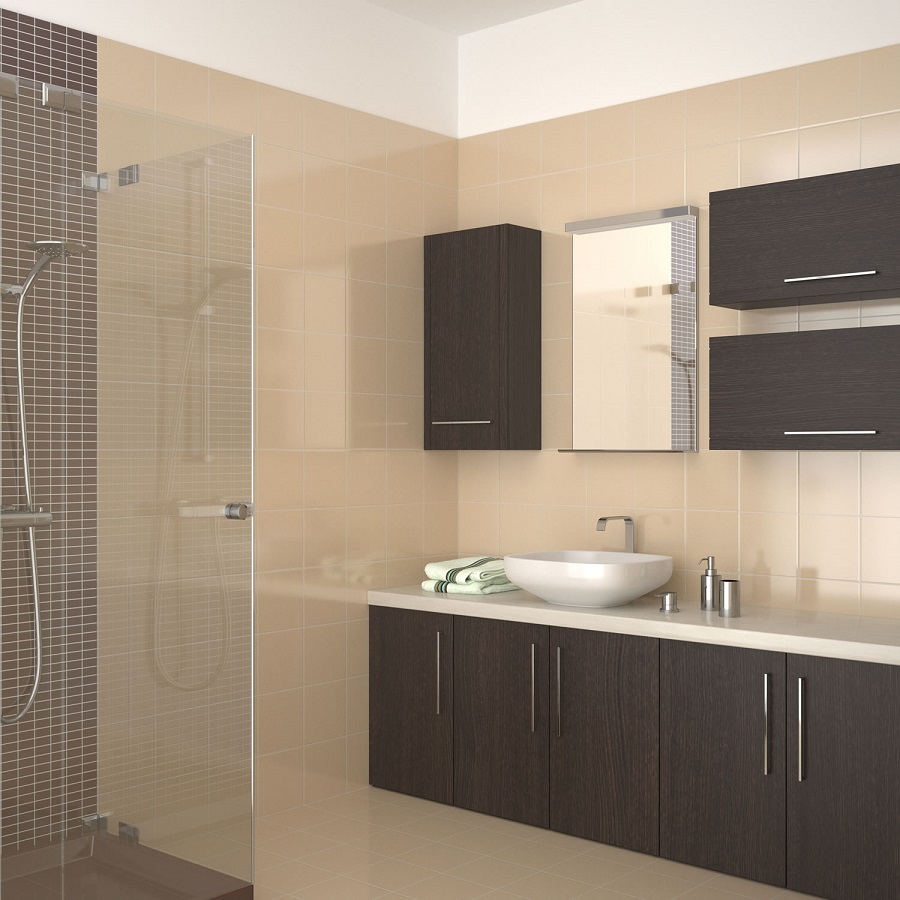
Selecting the Right Shade of Beige
Finding the perfect beige for your bathroom is crucial. Beige isn’t one-size-fits-all; it includes a range from dark, earth-tinged hues to pale, creamy tones. The right shade sets the mood, whether you want a cozy retreat or a sleek, modern haven. Remember, each beige behaves differently in unique spaces due to light, aspect, and size. Testing samples is vital to see how they live in your space. Consider how colors will look at different times of the day and against fixtures and current decor.
Testing Colors in Different Lighting Conditions
Lighting dramatically alters the appearance of beige, shifting its warmth and depth throughout the day. To ensure you select a beige that remains consistent and appealing under varied lighting, test your samples thoroughly. Apply paint swatches or place tile samples in various bathroom spots. Observe them during morning brightness, afternoon warmth, and evening dimness. This method ensures the beige you choose keeps your bathroom feeling serene and timeless, no matter the light.
Classic White and Beige Combinations
Pairing white with beige brings a classic and clean look to any bathroom design. This combination is timeless, as white adds a crisp contrast to the softness of beige tones. The result is a space that feels both airy and grounded. When working with white and beige, it’s important to balance the shades to avoid an overly washed-out look. The right mix will create a bathroom that feels fresh, welcoming, and enduringly stylish.
Incorporating Checkerboard Tile Accents
Checkerboard tile patterns are a great way to inject personality into a beige bathroom. When you blend beige with white in a checkerboard tile design, you get a subtle yet engaging visual interest. This pattern can be used on floors or walls to add dimension to the bathroom space. Choosing a matte or glossy finish can change the feel of the room; glossy tiles will reflect more light, while matte tiles offer a softer look. Checkerboard tiles work well in both small and large bathrooms, making them a versatile choice for your design.
Dramatic Flair with Darker Beige Tones
Opting for darker beige tones can add a sophisticated edge to a bathroom. These hues provide a touch of drama while maintaining a neutral palette. Darker beiges, blending into soft browns, are trendy and can create a grounded, modern look. Combining darker beige with crisp whites or lighter neutrals can keep the atmosphere balanced and inviting. Consider shades like taupe or mocha to infuse depth into your bathroom design.
Adding Contrast with Textures and Fixtures
Textures and fixtures play a crucial role in enhancing the visual interest of darker beige bathrooms. To avoid a flat look, mix in different materials like matte black hardware, glossy tiles, or ribbed glass. Metallic accents, especially in brushed nickel or chrome, complement dark beige and add a luxurious feel. For texture, add elements like plush towels, a patterned shower curtain, or a woven bath mat. Together, they contrast with darker beige tones, creating a dynamic and enriched space.
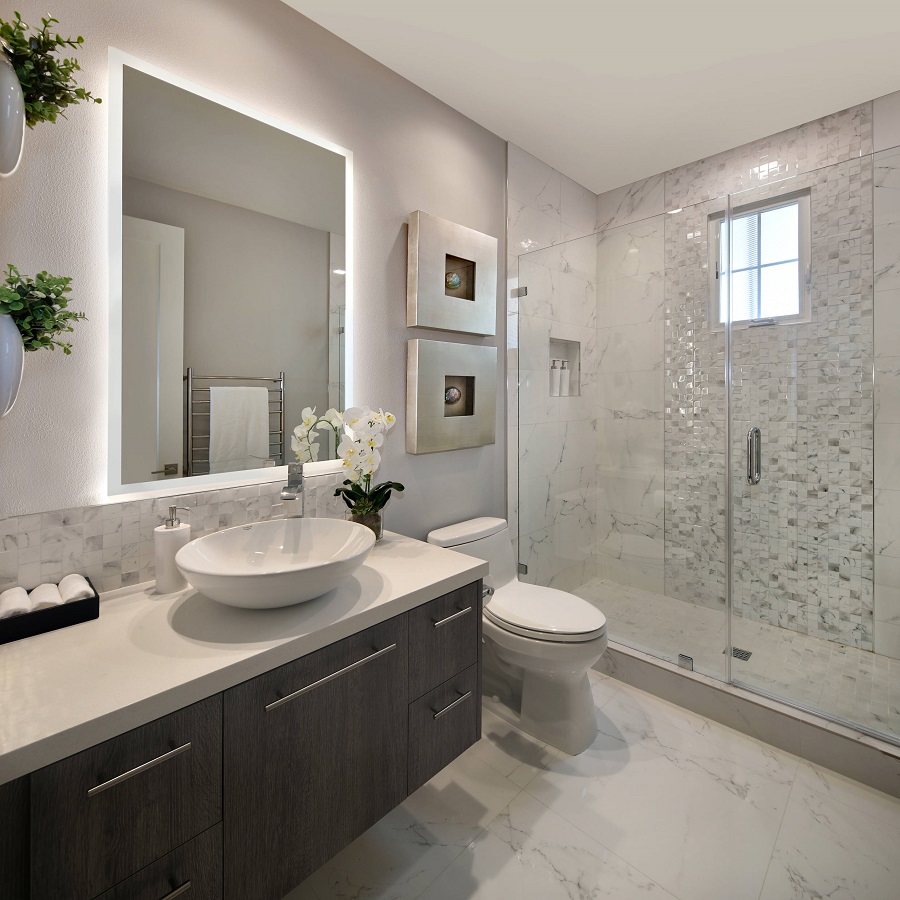
Warmer Beige Hues for a Cozy Ambiance
Choosing warmer beige tones can transform your bathroom into an inviting and relaxing retreat. Unlike cooler beiges, which can create a stark, unwelcoming environment, warm beige shades evoke a cozy, soft atmosphere. These hues reflect a gentle, flattering light, essential in a bathroom setting where comfort is key. Warm beiges are reminiscent of natural elements, bringing an earthy, soothing vibe to your space.
When selecting beige paint or tiles, look for undertones of peach, yellow, or red. These subtle hues add warmth and pair well with a variety of bathroom decors. The goal is to create a seamless blend of beige that doesn’t feel cold or impersonal but instead, wraps you in a hug of tranquil warmth whenever you step into the room.
Softening Hard Surfaces with Wood Elements
Wood is a natural ally of warm beige, offering a textural contrast that softens the inherent hardness of bathroom surfaces. Integrating wood elements, such as a wooden vanity, shelving, or mirror frames, can immediately introduce warmth into the room. Choose wood with warm undertones to harmonize with the beige color scheme.
Incorporating wood doesn’t mean overhauling your entire bathroom. Small touches, like a wooden bath mat or teak shower bench, can make a noticeable difference. Not only do they add a visual break from the glossy finishes of typical bathroom fixtures, but they also provide an organic feel that complements the serene and timeless theme of beige bathrooms.
Textural Depth in Beige Bathrooms
Beige bathrooms gain character through varied textures. Smooth, sleek surfaces often used in bathroom design, such as ceramics and glass, can create a somewhat cold and monolithic feel. To counteract this, integrating different textures adds visual and tactile warmth, making the space more inviting. Layering materials with varying surfaces and feels can transform a simple beige bathroom into a nuanced sanctuary. For example, incorporating organic materials can infuse a sense of calm, reminiscent of nature’s relaxing presence.
Incorporating Natural Stones and Tactile Tiles
Natural stone is ideal for adding texture. Consider marble, limestone, or travertine for countertops or flooring. Each stone has unique veins and patterns, contributing to a one-of-a-kind look. For walls, tactile tiles with raised designs can catch the light differently throughout the day, enhancing the room’s depth. Mosaic tiles are another option, their small pieces creating a detailed texture that can serve as a focal point or a subtle backdrop. Remember, the goal is to balance the beige tones with textural differences that appeal to the senses, making the bathroom not just a visual retreat but also a tactile haven.
Complementary Color: Soft Green as an Accent
Choosing soft green as an accent in a beige bathroom adds a tranquil, natural touch. This gentle hue enhances beige’s warmth and brings a hint of the outdoors inside. Ideal for towels, bath mats, or even plant life, soft green pairs beautifully with beige. This combination suits various styles, from rustic charm to modern elegance. Incorporating soft green elements is a subtle yet effective way to add vibrancy to a neutral space.
Bringing in Nature-Inspired Tones
Incorporating nature-inspired tones into a beige bathroom fosters a serene atmosphere. Soft green, reminiscent of foliage and nature, evokes a sense of calm. You can introduce these tones through wall art, greenery, or decorative accents. They mesh well with beige’s earthy essence. For an organic feel, select shades of green that mimic nature’s palette. A few carefully chosen green accents can refresh the entire look of your bathroom.
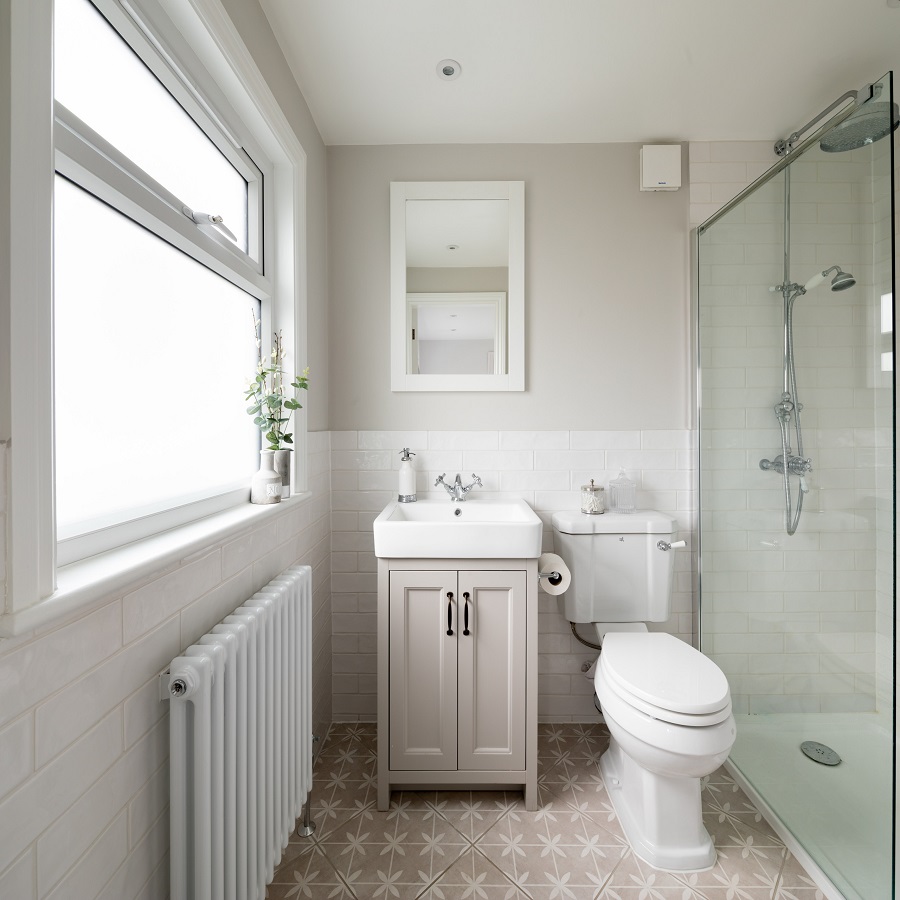
Moody Neutrals: Pairing Beige with Brass
Combining beige with brass can create a mood that is both neutral and inviting. This classic duo works well in a bathroom setting, bringing a touch of elegance and warmth. The warm metallic tones of brass fixtures and fittings stand out against the soft backdrop of beige. This addition can add a hint of luxury without overpowering the space, making it an ideal choice for those looking to introduce a sophisticated yet understated vibe into their beige bathroom ideas.
Brass accessories like taps, towel rails, and light fixtures can serve as focal points in the bathroom. They complement the beige palette and add to the room’s overall character. Not only does brass look chic, but it also develops a rich patina over time, which can add depth to the bathroom’s aesthetic.
Design Impact with Metal Finishes
The impact of metal finishes in a bathroom design cannot be understated. Brass, in particular, has a remarkable ability to elevate a space. When used in moderation, brass fixtures can act as jewelry for the bathroom, providing a striking contrast to beige walls or tiles. For example, a brass-framed mirror or brass drawer pulls can make a big difference in the overall look.
Selecting the right finish for metal touches is crucial. A brushed or satin finish can offer a more muted appearance, while polished brass provides a shiny and reflective look. It’s important to match these metal finishes with the beige tones in the room to ensure cohesion. When paired thoughtfully, beige and brass create a tranquil yet luxurious atmosphere that embodies both modernity and timelessness.
Embracing Natural Materials with Beige
In beige bathroom designs, embracing natural materials can add a layer of warmth and elegance. Natural elements can break up the monotony of solid colors, introducing varied textures and subtle color differences. These materials harmonize with beige’s earthy quality, enhancing the bathroom’s tranquil atmosphere. Consider adding stone, wood, or bamboo to bring a touch of nature into your serene space.
Coordinating Wood Tones and Finishes
When incorporating wood into a beige bathroom, it’s essential to coordinate the wood tones and finishes with the beige palette. Choose woods with warm undertones, like oak or cherry, to complement the soothing nature of beige. Finishes should also match the bathroom’s theme. For a sleek look, opt for polished wood; for a rustic vibe, try distressed wood. Ensure the wood’s finish echoes the beige’s warmth to create a cohesive and inviting bathroom retreat.
Breaking Monotony: Contrasting Shapes and Terrazzo
To break up the uniformity in a beige bathroom, introducing contrasting shapes and terrazzo can be effective. Different shapes, like oval mirrors or angular sinks, add visual interest without straying from the neutral theme. Terrazzo, with its specks of color and unique patterns, offers a playful yet sophisticated element. It can serve as flooring or countertop material, bringing a lively contrast to the calm beige backdrop.
Adding Character with Patterns and Textures
Patterns and textures infuse character into a beige bathroom. Consider a textured wallpaper, a patterned tile, or a sculpted light fixture. These elements draw the eye and add depth to the space. Opt for patterns that complement beige, like soft grays or warm browns. Textures should feel pleasant to touch, such as a fluffy bath mat or a ribbed towel. Such details can turn a simple bathroom into a stylish and engaging space.
